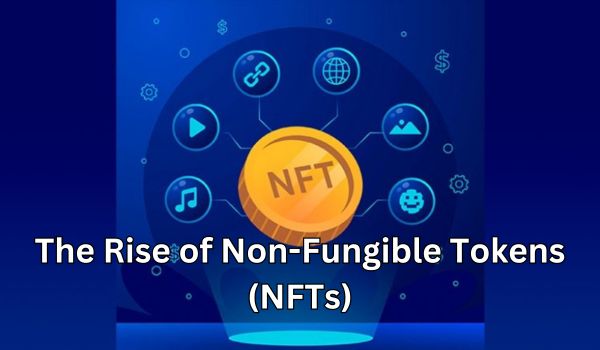The Rise of Non-Fungible Tokens (NFTs): A Paradigm Shift in Digital Ownership
The Rise of Non-Fungible Tokens (NFTs): A Paradigm Shift in Digital Ownership
The digital landscape has witnessed a revolutionary surge in recent years, driven by the emergence of non-fungible tokens (NFTs). These unique digital assets have disrupted traditional notions of ownership and value in the virtual world, sparking both excitement and skepticism. This article delves into the phenomenon of NFTs, exploring their core functionalities, the factors behind their rise, and the potential implications for various sectors.
Understanding NFTs: A Digital Certificate of Authenticity
At their core, NFTs are digital representations of unique assets stored on a blockchain, a secure, distributed ledger technology. Unlike fungible tokens like cryptocurrencies, where each unit is identical and interchangeable, each NFT possesses unique characteristics and cannot be replicated. This inherent uniqueness enables NFTs to function as certificates of authenticity for various digital and physical assets, including:
- Digital art: Paintings, music, and other creative works can be tokenized as NFTs, allowing artists to showcase their work, establish ownership, and potentially earn royalties on secondary sales.
- Collectibles: Digital versions of trading cards, sports memorabilia, and other collectibles can be represented as NFTs, offering a secure and verifiable ownership experience.
- Virtual items: In-game items, avatars, and other digital assets within online games and virtual worlds can be minted as NFTs, enabling players to own and trade them securely.
- Real-world assets: Ownership of physical assets like real estate, cars, or even luxury goods can be linked to NFTs, potentially streamlining transactions and enhancing transparency.

The Rise of NFTs: A confluence of factors
Several key factors have contributed to the meteoric rise of NFTs in recent times:
- The rise of blockchain technology: Blockchain’s inherent security and transparency provide a robust foundation for verifying ownership and tracking the provenance of NFTs.
- Increased interest in digital collectibles: The growing popularity of digital art, online gaming, and virtual worlds has fueled the demand for unique and ownable digital assets.
- Investment potential: The high-profile sales of certain NFTs for exorbitant sums have attracted investors seeking new avenues for returns, further propelling the market.
- Celebrity involvement: The involvement of celebrities and renowned artists in the NFT space has garnered mainstream attention and legitimized the technology.
The Potential Impact of NFTs: A Glimpse into the Future
The potential applications of NFTs extend far beyond the realm of digital art and collectibles, impacting various sectors and reshaping our understanding of ownership in the digital age. Here are some potential areas of influence:
- Empowering creators: NFTs empower creators to monetize their work directly and establish a verifiable record of ownership, potentially disrupting traditional gatekeepers in the creative industries.
- Transforming fan engagement: NFTs can foster deeper connections between creators and fans by offering exclusive content, experiences, and voting rights associated with specific NFTs.
- Revolutionizing supply chains: NFTs can be used to track the provenance of physical goods, ensuring authenticity and combating counterfeiting within various industries.
- Shaping the metaverse: NFTs are expected to play a crucial role in the development of the metaverse, a virtual world where users can interact and own digital assets represented by NFTs.
Challenges and Considerations: Navigating the Uncharted Territory
Despite the immense potential, the NFT landscape is not without its challenges. Issues such as environmental concerns surrounding the energy consumption of blockchain technology, the potential for scams and market manipulation, and the lack of clear regulations require careful consideration and responsible development.
As the NFT space continues to evolve, ongoing discussions and collaborative efforts are crucial to address these challenges and ensure the responsible and sustainable development of this transformative technology.
Conclusion: A Paradigm Shift in the Making
The rise of NFTs signifies a paradigm shift in our understanding of digital ownership and value. While the technology is still in its nascent stages, its potential to reshape various industries and empower creators is undeniable. As we navigate the uncharted territory of NFTs, fostering open dialogue, addressing challenges responsibly, and harnessing the technology’s potential for positive impact will be key to shaping a future where the digital realm thrives on authenticity, transparency, and innovation.